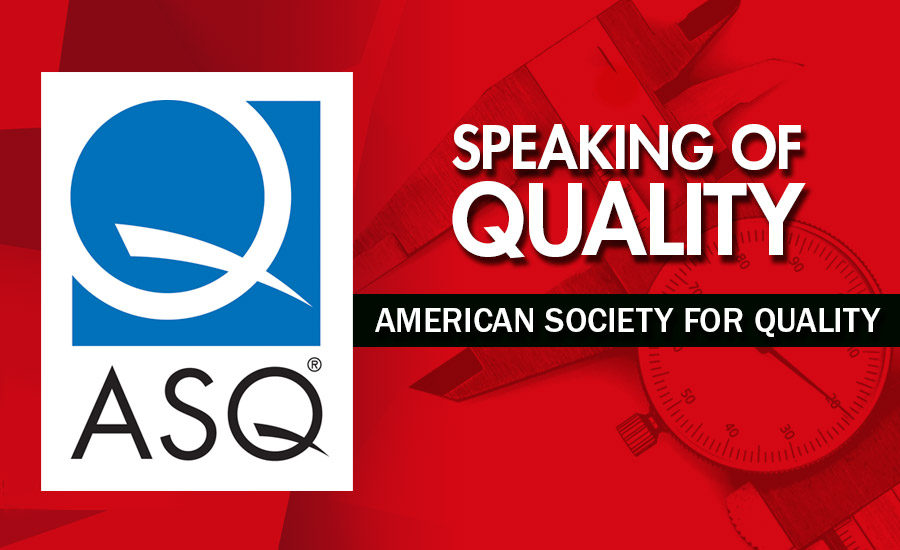Speaking of Quality | Kathy Lyall
Culture of Quality
Do employees "live" quality in all of their actions?

A company with a highly developed culture of quality spends, on average, $350M less annually fixing mistakes than a company with a poorly developed one (Harvard Business Review, 2014). This fact is widely publicized in leadership texts and periodicals. As a result, most companies claim they have a culture of quality. The word quality is frequently used in meetings and in marketing literature. The word quality is also often found in training, job descriptions, and signs throughout the workplace. However, despite wide acceptance of the importance of quality culture, most firms fail to integrate the quality mindset multilaterally across the enterprise. Research has found that the traditional strategies to increase quality, such as monetary incentives, training, and best practice sharing, are not effective. Organizations that have a grassroots, peer-driven approach to advancing a culture of quality are the ones that succeed because they are effective at driving down the cost of poor quality and sustaining results.
Culture is manifested in collective behaviors and is the set of shared beliefs, attitudes, values, goals, and practices that characterize an organization. Culture of quality is defined as an environment in which employees not only follow quality guidelines, but also consistently see others taking quality-focused actions, hear others talking about quality, and feel quality all around them. Employees at all levels of the organization, and across all functions, must “live” quality in order to achieve this ideal state. Employees throughout the organization must be trained in quality tools, reflect on failures, and work cross-functionally to solve problems. Companies that have achieved the true culture of quality, demonstrate three common traits: leadership commitment, employee ownership, and organization-wide continuous improvement.
1. Leadership Commitment
Leaders at the very top of the organization must buy into the notion that increasing quality increases competitive advantage in the marketplace. If their commitment to quality is genuine, their passion will be transparent, and contagious. Leaders who are passionate about quality create and maintain an awareness of quality objectives and performance. One common way leaders demonstrate their commitment to quality is to set the expectation that quality is everyone’s responsibility. Management must demonstrate quality leadership. Even when executives have the best intentions, there are often gaps between what they say and what they do. As a result, employees get mixed messages about whether quality is truly important. Leaders must “walk the talk” every day, consistently prioritizing quality as they make decisions.
2. Employee Ownership
A defining trait of an organization with a true culture of quality is that employees are empowered to make quality decisions. Management must provide opportunities for employees to participate in quality, as well as provide robust quality training. Accountability for quality, and use of quality tools, must expand beyond the quality department. To encourage the development of a passion for quality, employees throughout the organization need to understand it, and see the tangible benefits it brings. Workers must clearly understand how the work they do impacts product/service quality, and ultimately how their work impacts the customer. Most importantly, workers must feel comfortable raising concerns about quality violations and challenging directives that detract from quality.
3. Organization-wide Continuous Improvement
Companies with the highest quality levels are committed to continuous improvement and it is evident across the enterprise. They maintain a customer focus and foster an environment of collaboration and teamwork. They reward personnel throughout the organization for working together cross-functionally to solve challenging problems. Companies that embrace the culture of quality have a systematic approach to improving products, services, and processes. Companies with this mindset view every failure as an opportunity to improve. They deploy cross-functional teams of employees to find the true root cause and to follow-through to implement effective corrective and preventive actions that prevent recurrence.
In today’s competitive marketplace, consumers’ tolerance for inferior quality is low. In many cases, if they have one bad experience, they opt to try a competitor’s product or service. That potentially is market share that you will never earn back. In a survey conducted by Harvard Business Review, 60% of respondents said they work in an environment without a culture of quality. Herein lies the opportunity. An organization that has achieved a true culture of quality, including a workforce that embraces quality as a core value, has significant competitive advantage. When properly aligned with values and business objectives, a culture of quality can unleash tremendous amounts of energy toward a shared purpose and foster an organization’s capacity to thrive. If your organization’s quality is lacking, focus on strengthening the attributes that a true culture of quality exhibits: leadership commitment, employee ownership, and organization-wide continuous improvement. Improved results are sure
to follow. Q
Looking for a reprint of this article?
From high-res PDFs to custom plaques, order your copy today!







